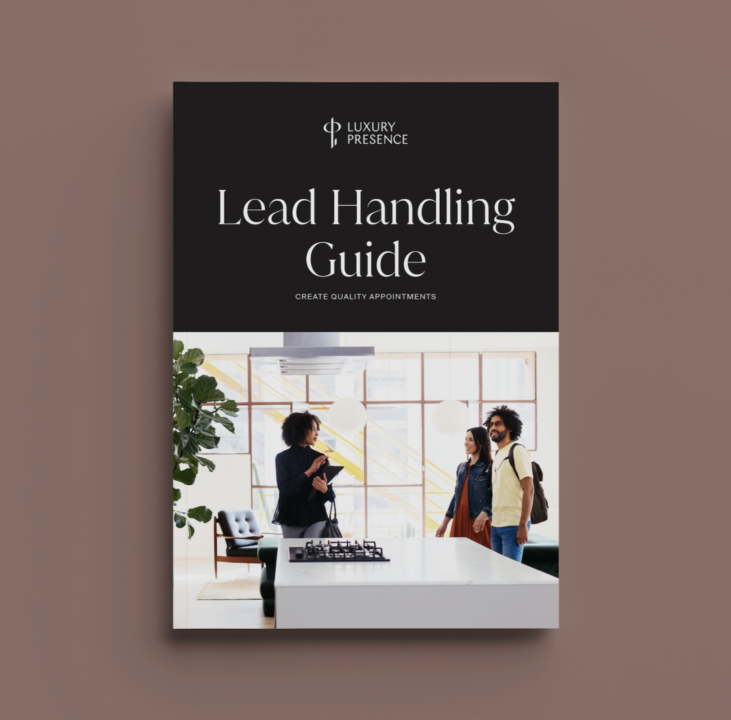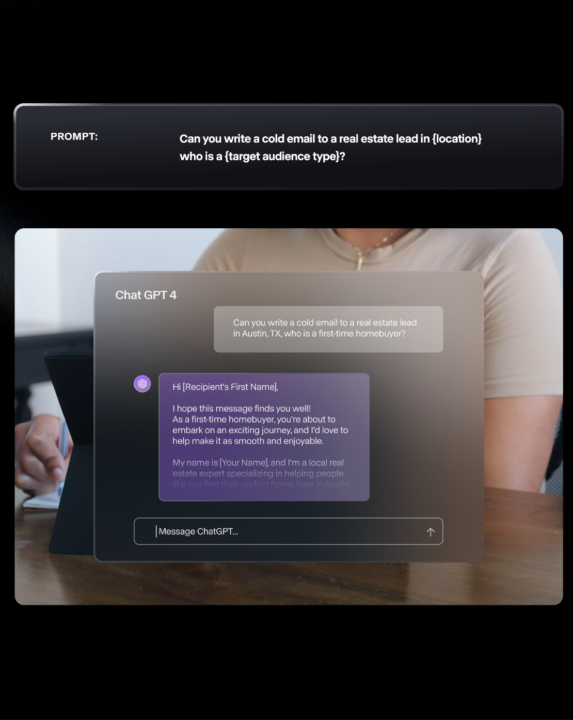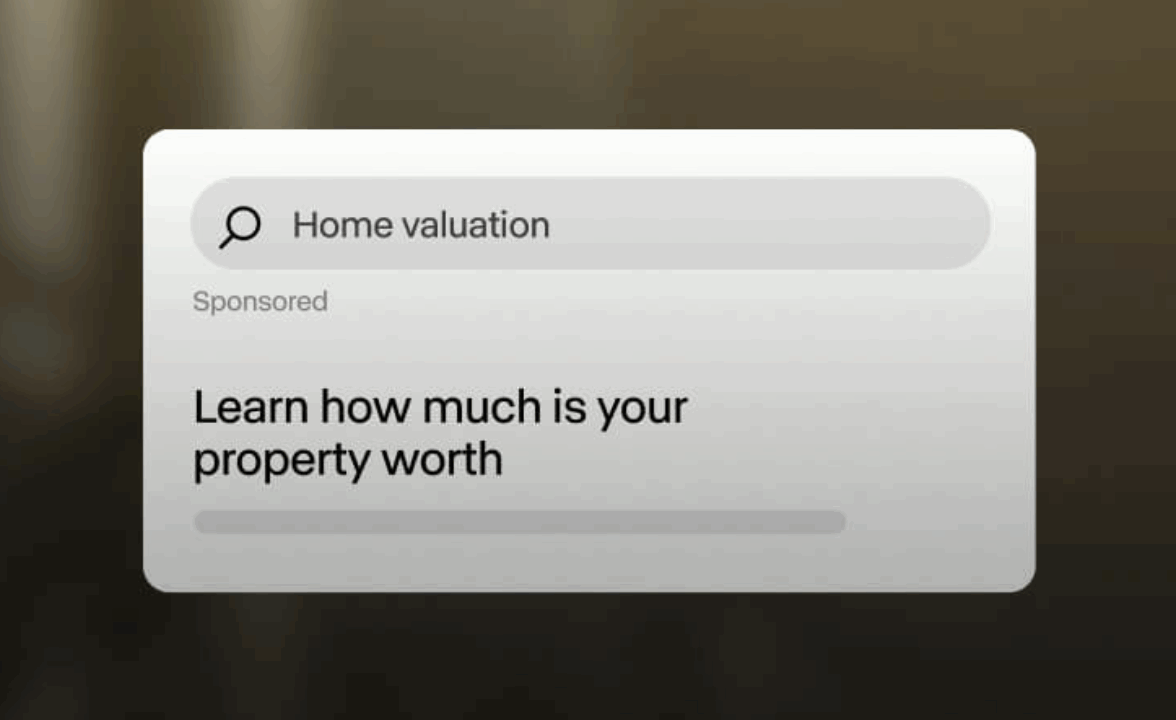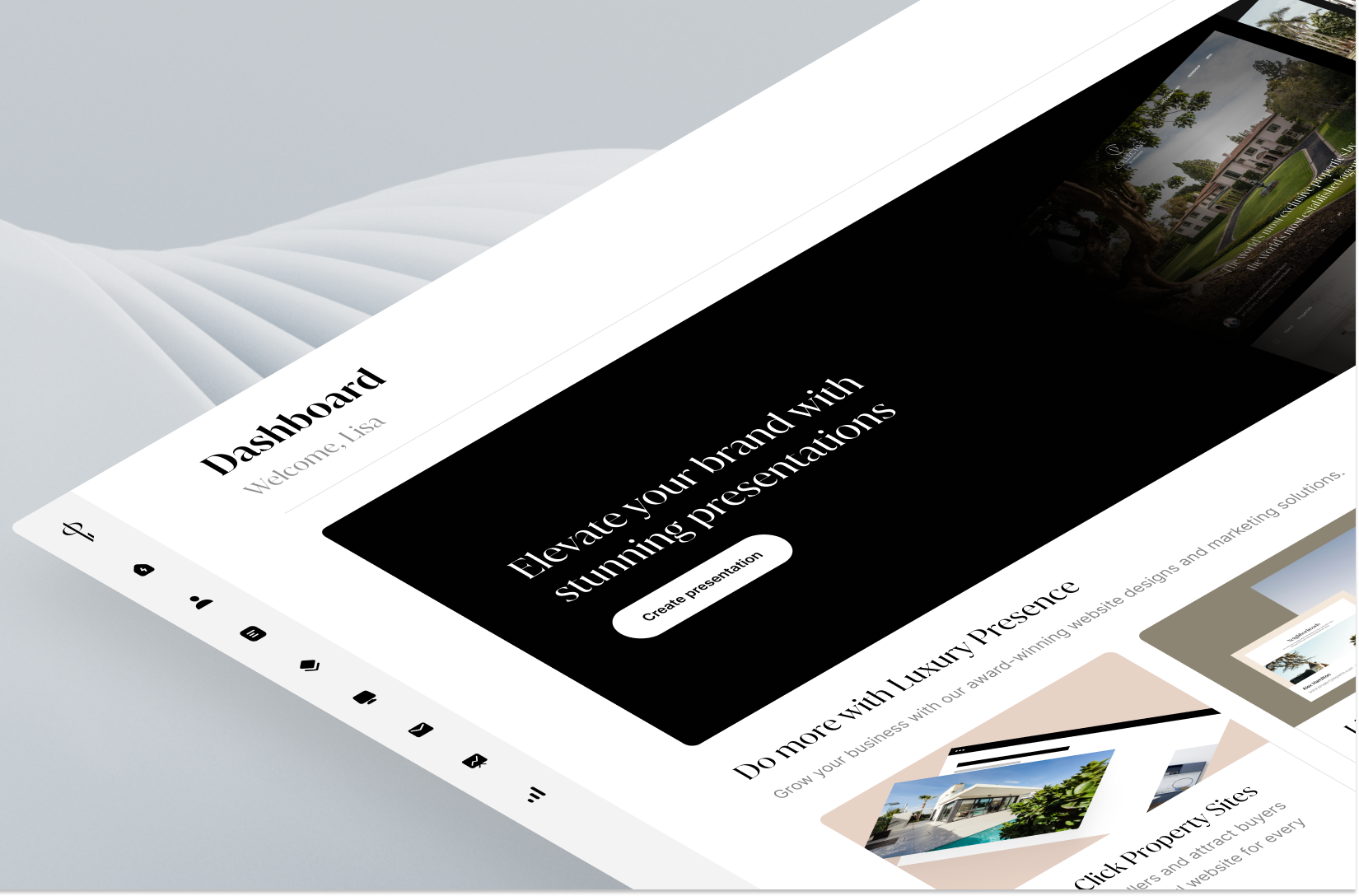A real estate community guide is a powerful tool that can set you apart, build trust, establish authority, and generate leads. It provides prospective buyers with an in-depth look at the neighborhoods they’re interested in, offering valuable information that goes way beyond typical listing details.
Here we’ll explore what a real estate community guide is and what it should include, how it benefits your marketing strategy and generates leads, and how you can leverage AI technology to simplify the process of creating one.
Find It Fast
What is a real estate community guide?
A real estate community guide is a comprehensive overview of a specific neighborhood or area. It gives buyers a clear picture of what life in a particular neighborhood is like, helping them make informed decisions about their future home.
How real estate community guides benefit agents
Creating a real estate community guide does more than provide information — it’s a strategic tool that enhances your reputation and generates leads.
Establishing authority
Creating a real estate community guide allows you to position yourself as a neighborhood expert. When potential buyers want to know about the lifestyle in the area, a well-researched guide answers these questions, positioning you as a go-to resource for detailed, relevant information. It also helps sellers see you as someone with the requisite knowledge to properly market their properties.
Enhancing SEO and online presence
When optimized with the right keywords (especially using local keywords like “Wagener Terrace community guide”), these guides can significantly boost your search engine optimization (SEO) efforts. Creating localized content that aligns with the interests of your target audience improves your chances of appearing in search results when potential clients search for information about specific areas.
Bringing in leads
Offering a downloadable or exclusive community guide on your website or a specific landing page can attract potential clients and generate leads. By requiring visitors to provide their contact information in exchange for the guide, you can build your email list with warm leads who are already interested in specific neighborhoods, making it easier to nurture them into clients.
Supporting content marketing efforts
Community guides offer high-quality, evergreen content that you can regularly infuse into your overall marketing strategy. Sharing these guides through newsletters, blog posts, and social media channels can help keep your leads engaged and informed.
Develop your lead nurturing strategy
Turn leads into clients with our free scripts, follow-up schedules, and communication tips.

What to include in a real estate community guide
A well-crafted real estate community guide should offer a comprehensive overview of the area, providing both general information and specific details that potential buyers find valuable. Here’s a breakdown of key elements to include to make your guide as informative and engaging as possible.
Neighborhood overview
Start with a high-level introduction that gives readers a sense of the overall vibe of the area. This section should give a clear picture of what life is like, helping prospective clients decide whether it matches their lifestyle preferences.
- Key topics to include: Outline the community’s history, notable landmarks, and any unique characteristics that set it apart.
- Example: “Nestled in the heart of the city, Hampton Park Terrace is known for its tree-lined streets, historic architecture, and vibrant local culture. With a mix of modern amenities and a rich history, this neighborhood attracts young professionals and families alike.”
Local amenities and attractions
Potential buyers want to know what daily life will look like in a new neighborhood. Don’t forget to mention popular attractions like entertainment venues, dining spots, and cultural hubs.
- Key topics to include: Add shopping centers, restaurants, parks, fitness facilities, public transit options, and entertainment venues. Be sure to note how these amenities benefit the local residents and help build community.
- Example: “Residents of Hampton Park Terrace enjoy easy access to Hampton Park, known for its jogging trails and community events, as well as top-rated dining options like Park and Grove, offering gourmet cuisine in a relaxed atmosphere.”
Schools and education
For families, school districts are often a major consideration when choosing a neighborhood. Be sure to keep your information objective and rely on expert third-party sources.
- Key topics to include: Offer information on the top schools in the area, along with their ratings, types (public, private, charter), and any special programs they offer. Also, mention proximity to colleges or adult education options if relevant.
- Example: “Hampton Park Terrace is home to several top-rated schools, including James Simons Elementary, which consistently ranks among the best for its academic performance, Montessori programming, and extracurricular programs.”
Housing market overview
A vital part of any real estate community guide is the housing market snapshot. Be sure to keep your market information fairly general and based on annual statistics so that you’re not needing to update this section every week or month.
- Key topics to include: Highlight the types of properties common in the area — single-family homes, condos, townhouses, or luxury estates — and include relevant statistics like median home prices, time on market, and inventory levels.
- Example: “The median home price in Hampton Park is $500,000, with a variety of housing options ranging from historic townhomes to modern condos. The market here has seen steady growth, with homes typically selling within 21 days.”
Demographics and lifestyle
Buyers often want to know more about the people who live in a neighborhood. Provide a snapshot of the demographic makeup, including age, income levels, and family types. You can also include insights into the neighborhood’s lifestyle, such as whether it attracts families, young professionals, retirees, or a mix of all.
- Key topics to include: Be specific about demographic breakdown, community activities, and cultural vibe. Highlight community involvement, local traditions, or notable neighborhood events.
- Example: “With a median age of 35 and a mix of young professionals and families, Hampton Park Terrace has a dynamic, community-oriented vibe. The neighborhood hosts annual events like the classic Teddy Bear Picnic and the Spoleto finale, bringing residents together for food, music, and entertainment.”
Transportation and commute times
Buyers want to know how easy it will be to commute to work or access public transportation. Consider including Walkscores or even embedding an interactive map that helps readers with geographical context.
- Key topics to include: Highlight nearby highways, public transit options, and average commute times to popular areas. Include information on walkability and bike-friendliness, especially if these factors are important in your target market.
- Example: “Commuters in Hampton Park Terrace enjoy quick access to major highways, including highways 17 and 26. The neighborhood also offers multiple bus lines and bike-friendly routes.”
Local economy and job opportunities
For buyers who may be relocating, understanding the local economy and job market is essential. Include information about industries and jobs, but also coworking spaces for remote workers.
- Key topics to include: Highlight major employers, local industries, and any business growth in the area. If applicable, mention any nearby tech hubs, industrial centers, or corporate headquarters that could appeal to professionals.
- Example: “The neighborhood benefits from its proximity to Charleston’s tech corridor, which hosts numerous tech startups and established companies like BoomTown and PhishLabs. Job opportunities in the area are plentiful, especially in tech and healthcare.”
Future development plans
Including information about upcoming developments can help prospective buyers understand how the area might change in the coming years.
- Key topics to include: Include new shopping centers, public transportation projects, or residential developments. Discuss how these changes might impact property values, lifestyle, and accessibility.
- Example: “Future development plans for Hampton Park Terrace include improvements to the Citadel football stadium, which will function as a multiuse venue and is expected to boost property values.”

Staying compliant with FHA
When writing a community guide, real estate agents must be mindful of fair housing guidelines to avoid unintentionally discriminatory language. Phrases that could suggest preferences or exclusions based on race, religion, familial status, or national origin can violate fair housing laws.
Describing neighborhoods in ways that imply certain groups of people are more or less desirable, or making assumptions about the type of buyers who would “fit” a community, can lead to legal issues. Agents should focus on objectively delivering factual information — like amenities, schools, and property features — to ensure compliance.
Using AI technology to create your community guide
The creation of community guides can be time-consuming, especially when you’re juggling other aspects of your business. That’s where artificial intelligence (AI) tools like ChatGPT can come into play. AI simplifies the research and writing process, helping you generate high-quality content faster and with minimal effort. With AI, you can create informative, engaging guides that provide value to your audience without spending countless hours researching, drafting, and editing.
Boost productivity with AI
Our e-book contains tested prompts for outsourcing common real estate tasks to ChatGPT and best practices for using artificial intelligence properly in your business.

5 templated prompts for using AI to help generate community guides
These AI prompts will give you a solid foundation to customize your guides to specific neighborhoods, ensuring that they provide the most up-to-date and relevant information for your audience. As AI-generated information has the potential to be incorrect, always fact-check and edit ChatGPT’s output.
- Basic neighborhood overview
- Prompt: “Write a 500-word overview of {neighborhood name}, focusing on the amenities, local attractions, and housing market trends.”
- Schools and education
- Prompt: “List and describe the top three schools in {neighborhood name}, including their ratings, locations, and what makes each one unique.”
- Lifestyle and demographics
- Prompt: “Provide a snapshot of the lifestyle in {neighborhood name}, including the types of residents, common activities, and community culture.”
- Real estate market insights
- Prompt: “Summarize the current real estate market in {neighborhood name}, including median home prices, types of properties available, and market trends over the last year.”
- Prompt: “Here is the latest housing market data for {neighborhood name}: {insert market data}. Please analyze the trends based on this data, including any changes in median home prices, days on market, and inventory levels. Highlight any notable shifts or opportunities in the real estate market and provide insights into whether it’s currently a buyer’s or seller’s market.”

Ensuring your community guide is visually stunning and on-brand
A community guide not only needs to be informative but also visually appealing so as to capture and retain the attention of potential clients.
Align it with your branding
Consistency in branding is key to maintaining a professional image and reinforcing your business’ identity. Make sure that the design of your community guide matches what’s in your brand book, including colors, fonts, and logo. This consistency helps in building brand recognition and trust with your audience.
Incorporate high-quality images
Visual content plays a significant role in making your guide more engaging, providing a real sense of what life in the area is like. Include high-resolution images of the neighborhood, local attractions, and community features. Ensure these images are relevant and add value to the content. High-quality visuals enhance the guide’s appeal and make it more shareable.
Use infographics and data visualization
Infographics and data visualizations are powerful tools for presenting complex information in a digestible format. Use charts, graphs, and maps to illustrate market trends, demographic data, and other relevant statistics. This not only makes the guide more engaging but also helps readers quickly understand key insights.
Ensure readability and accessibility
The design of your community guide should prioritize readability and accessibility. Use clear, legible fonts and ensure that the text contrasts well with the background. Break content into easily digestible sections with headings and bullet points to enhance readability. Also, make sure that the guide is accessible to all users, including those with disabilities, by adhering to universal design practices.
Maintain consistent quality
As you design your guide, ensure it’s optimized for both print and digital and that the quality remains consistent throughout. For printed versions, use high-quality paper and printing techniques to enhance the guide’s tactile appeal. For digital versions, optimize file sizes to ensure fast loading times and high-quality visuals.
Promoting your real estate community guide
Creating a high-quality community guide is only part of the equation; getting it into the hands of potential clients is equally crucial. Here are some effective strategies for promoting your community guide and maximizing its impact.
Pay-per-click (PPC) advertising
Leverage PPC advertising to drive targeted traffic to your community guide. Create ad copy that highlights the value of your guide, such as “Discover the best of {neighborhood} with our expert community guide.”
Target keywords related to the neighborhood and real estate inquiries to ensure your ads reach individuals actively searching for information about the area. Utilize ad platforms on Google and Bing to get your ads in front of a highly relevant audience. Direct the ads to a dedicated landing page where visitors can download or access the guide.
Social media marketing
Social media is a powerful tool for promoting your community guide. Share engaging posts across platforms such as Facebook, Instagram, and LinkedIn to capture the attention of your audience.
Use eye-catching images, infographics, and snippets from the guide to highlight key insights and benefits. Create a compelling call to action encouraging users to download or request the guide. You can also use paid social media ads to target specific demographics and interests, ensuring your guide reaches potential clients who are most likely to be interested in the neighborhood.
Email marketing
Create a dedicated section in your newsletters or a standalone email campaign to promote your guide. Highlight the value it offers and include a clear call to action with a link to access the guide.
Segment your email list to target leads who have shown interest in specific neighborhoods or have previously engaged with similar content. This targeted approach ensures the guide reaches those most likely to be interested, boosting conversion rates.
Website and blog integration
Add the community guide to your website and blog to increase visibility. Create a dedicated page or blog post that showcases the guide and provides a link to download.
Optimize this content with relevant keywords to improve SEO and attract organic traffic. Ensure the page is visually appealing and includes a simple, user-friendly form for visitors to access the guide. You can also add a pop-up or banner ad on your homepage that promotes the guide to visitors.
Collaborations and partnerships
Partner with local businesses, influencers, or community organizations to expand your reach. Offer to feature their insights or promotions within your community guide in exchange for them promoting it to their audience.
Local real estate bloggers or influencers can also help amplify your guide’s reach and credibility. Leverage these partnerships to tap into new networks and drive more targeted traffic to your guide.
Local events and open houses
Promote your community guide at local events and open houses. Distribute printed versions of the guide or offer QR codes that link to the digital version. Use these opportunities to engage directly with potential clients and provide them with valuable information about the neighborhood. Incorporate the guide into your event materials and presentations to enhance its visibility and effectiveness.
Marketing your community + Luxury Presence
Start incorporating community guides into your marketing strategy today to set yourself apart as a neighborhood expert and attract more clients to your real estate business.
Hoping to use community guides to skyrocket your overall marketing strategy? We can help. Partner with Luxury Presence, a real estate marketing powerhouse, to host your digital marketing and amplify your success.
Luxury Presence can elevate your marketing strategy
Learn how we can help take your real estate business to the next level. Schedule a time to speak with one of our branding experts today.





